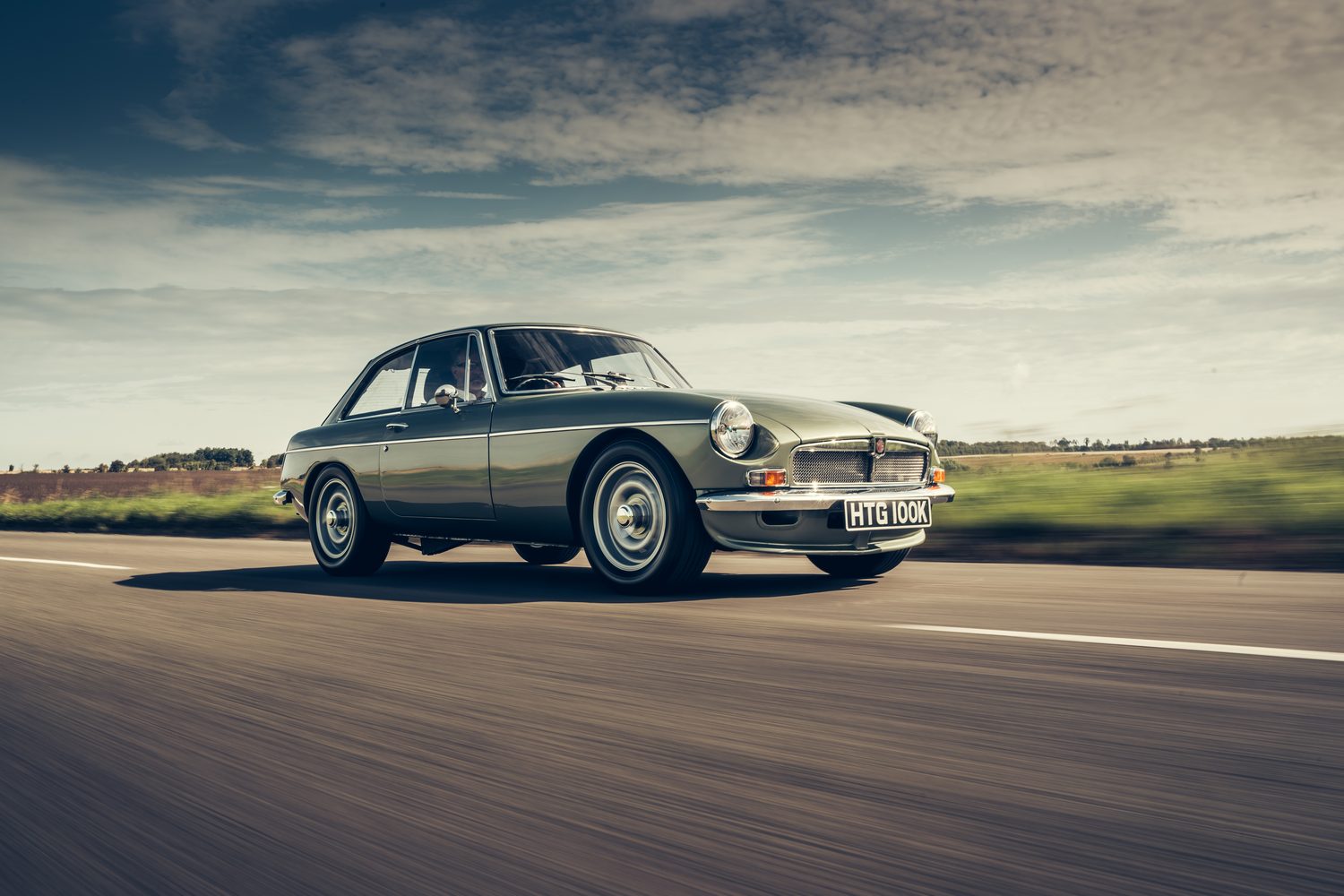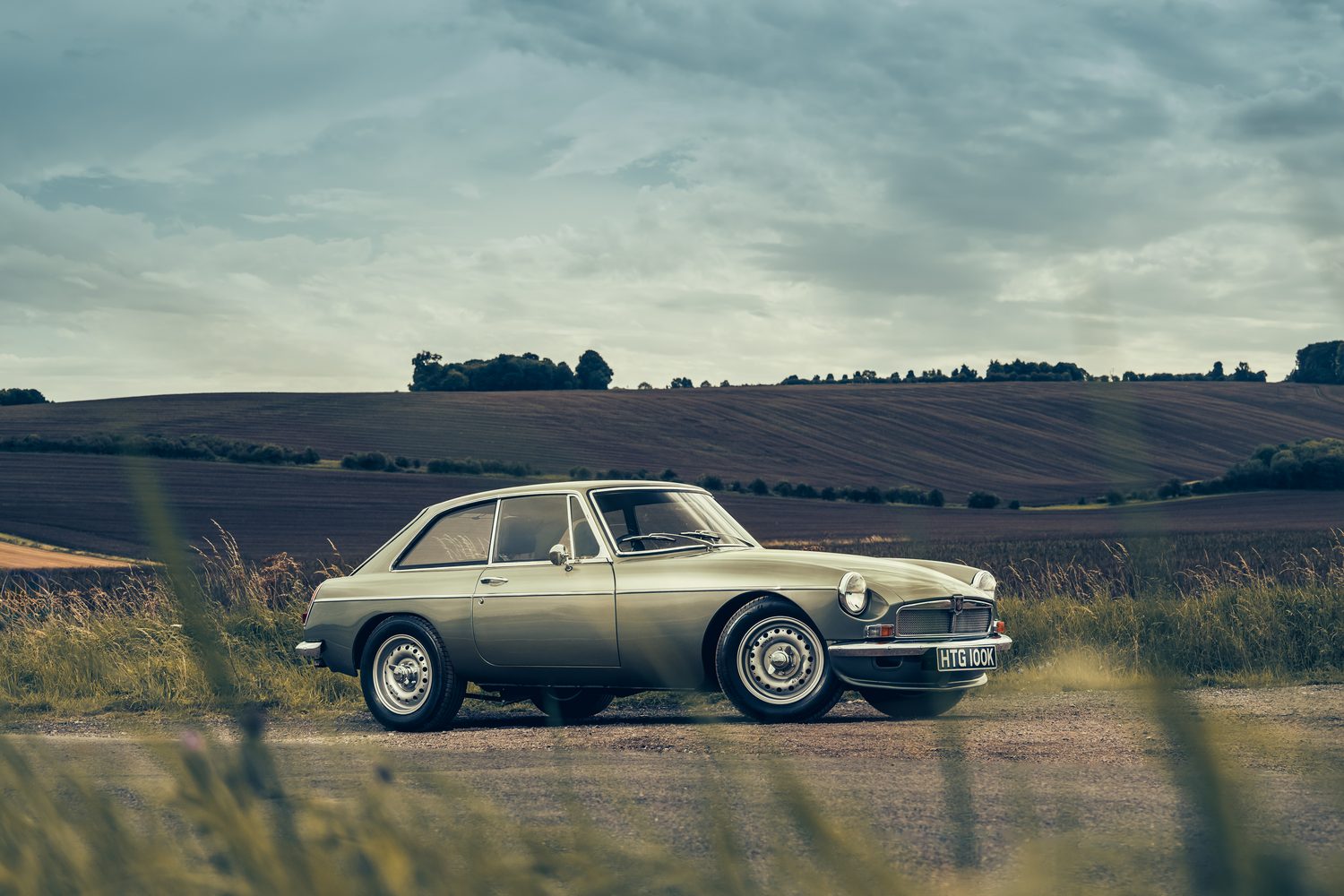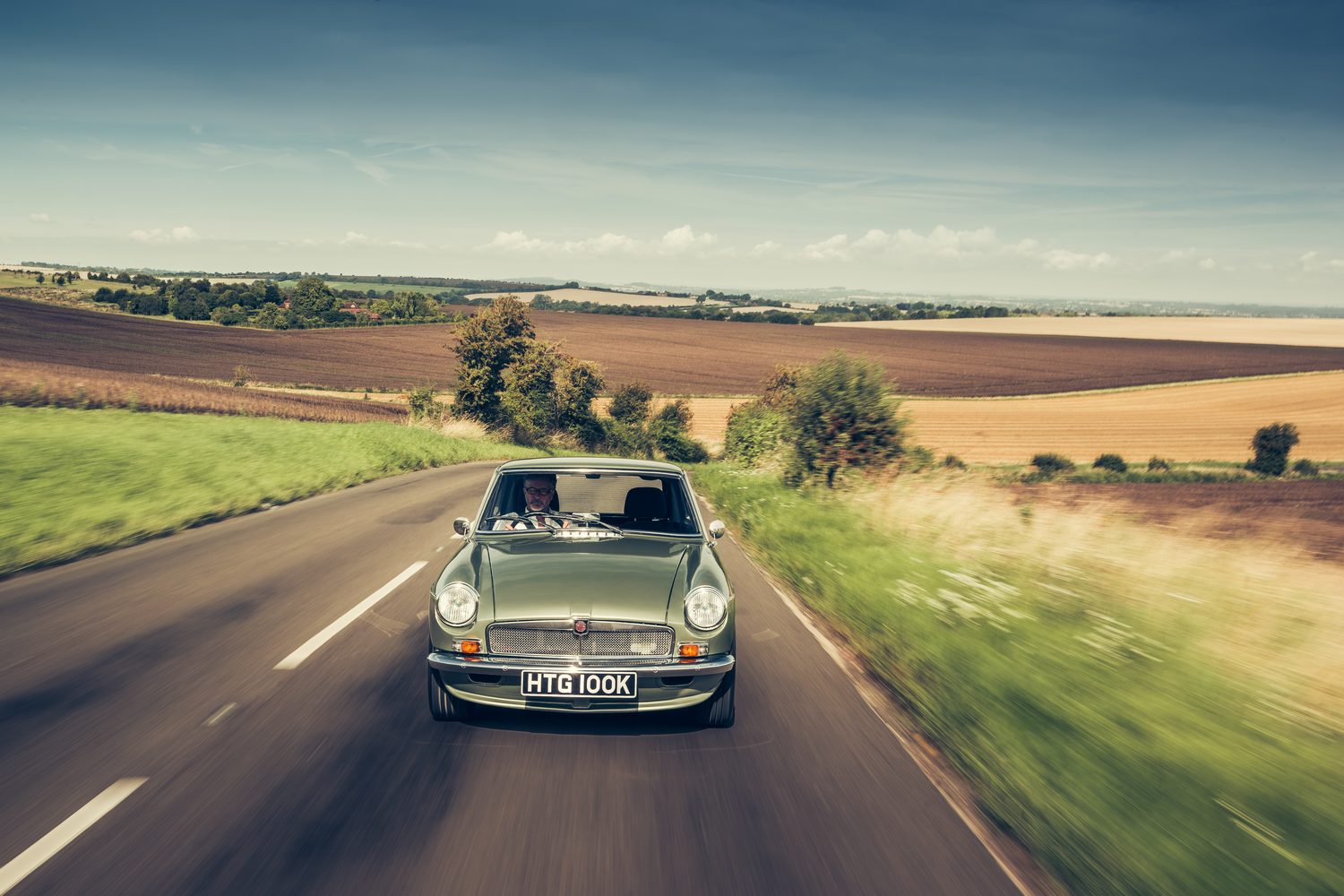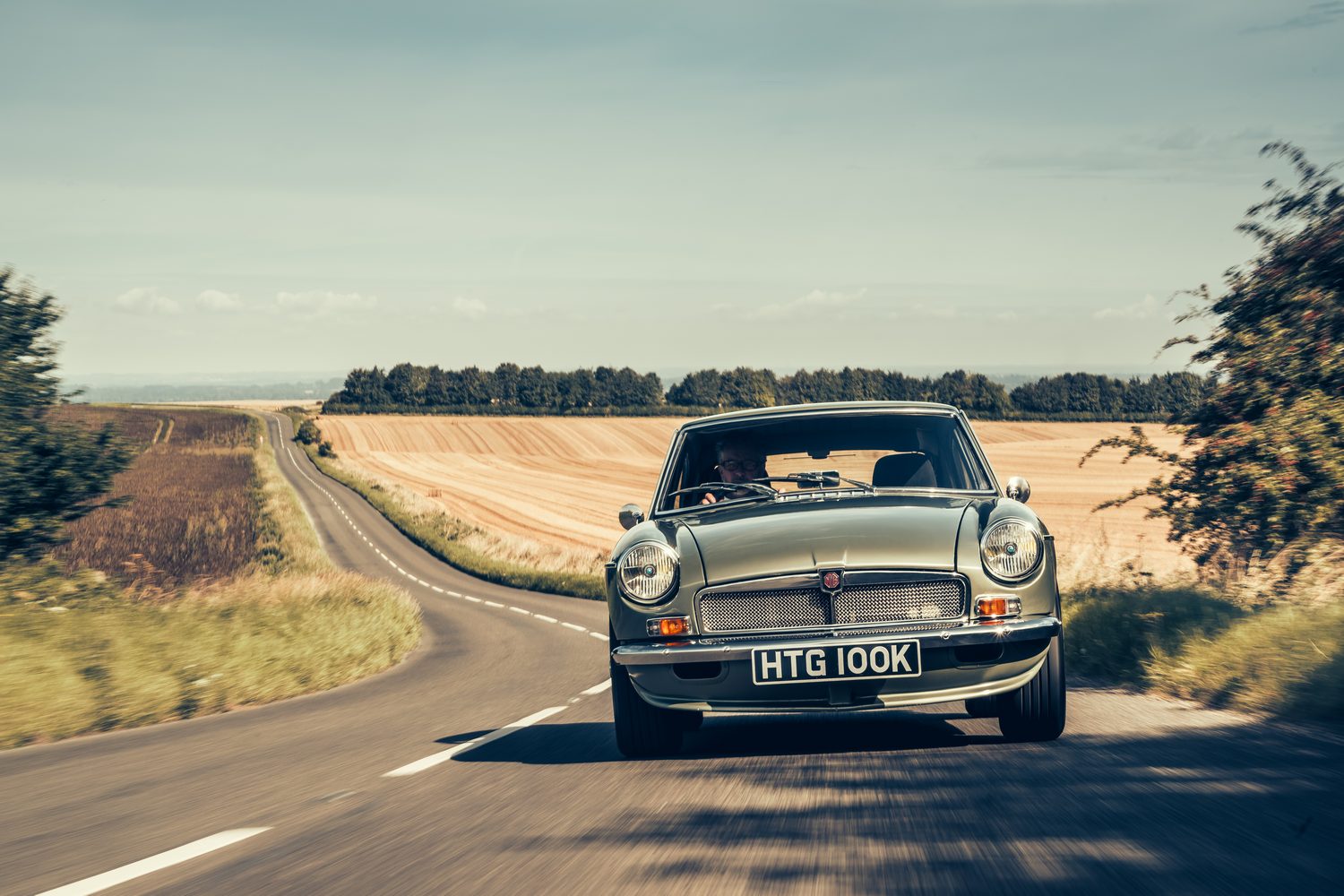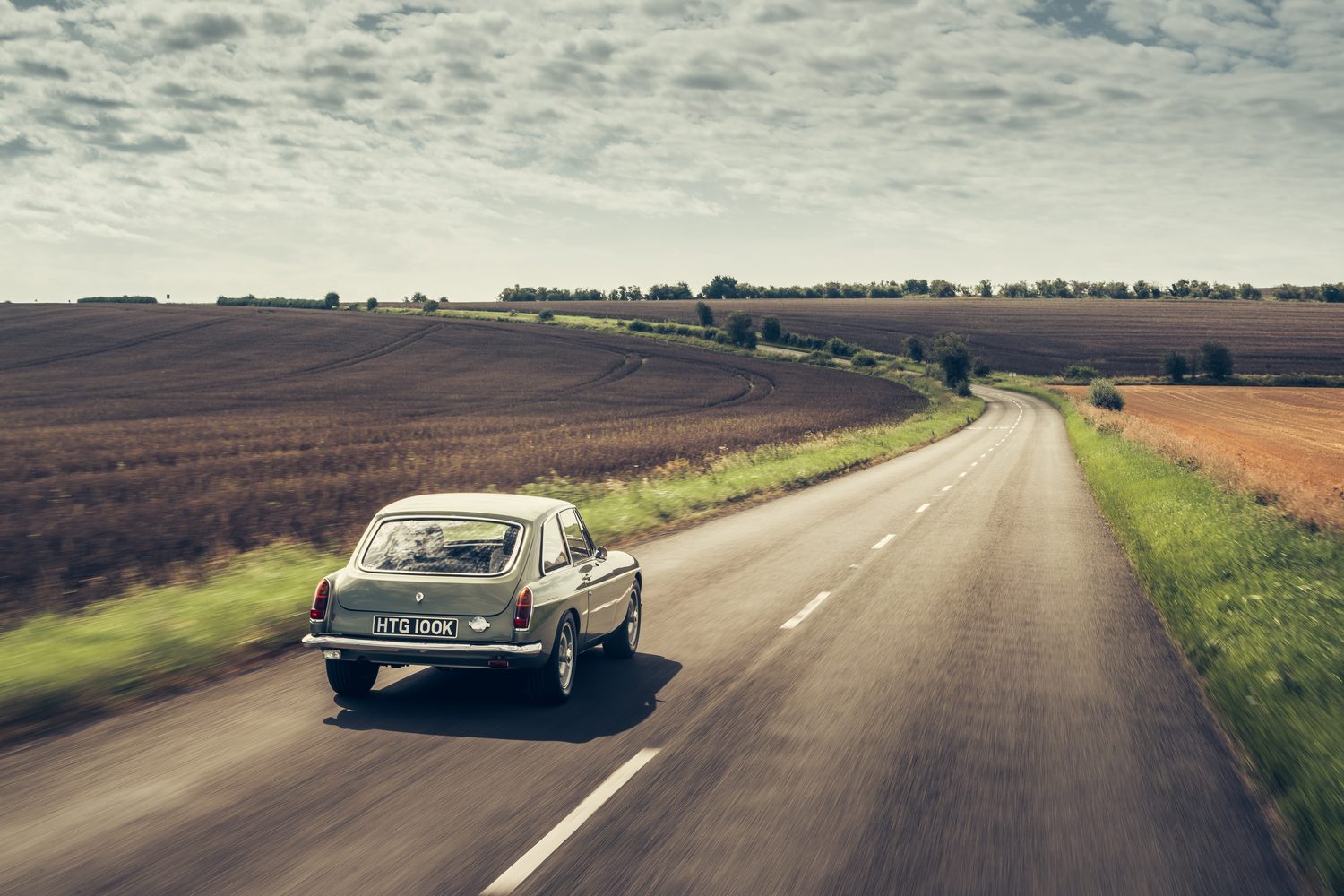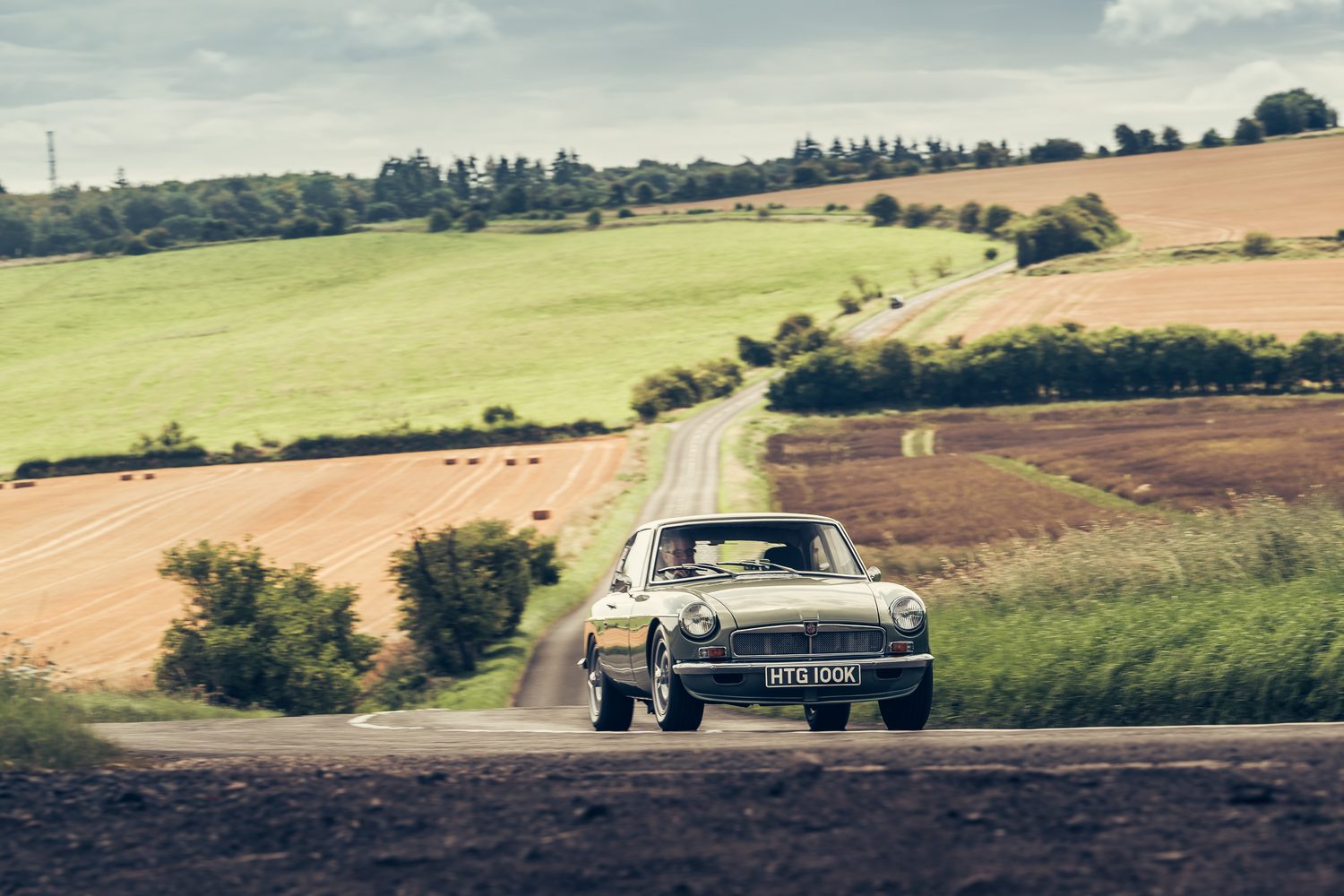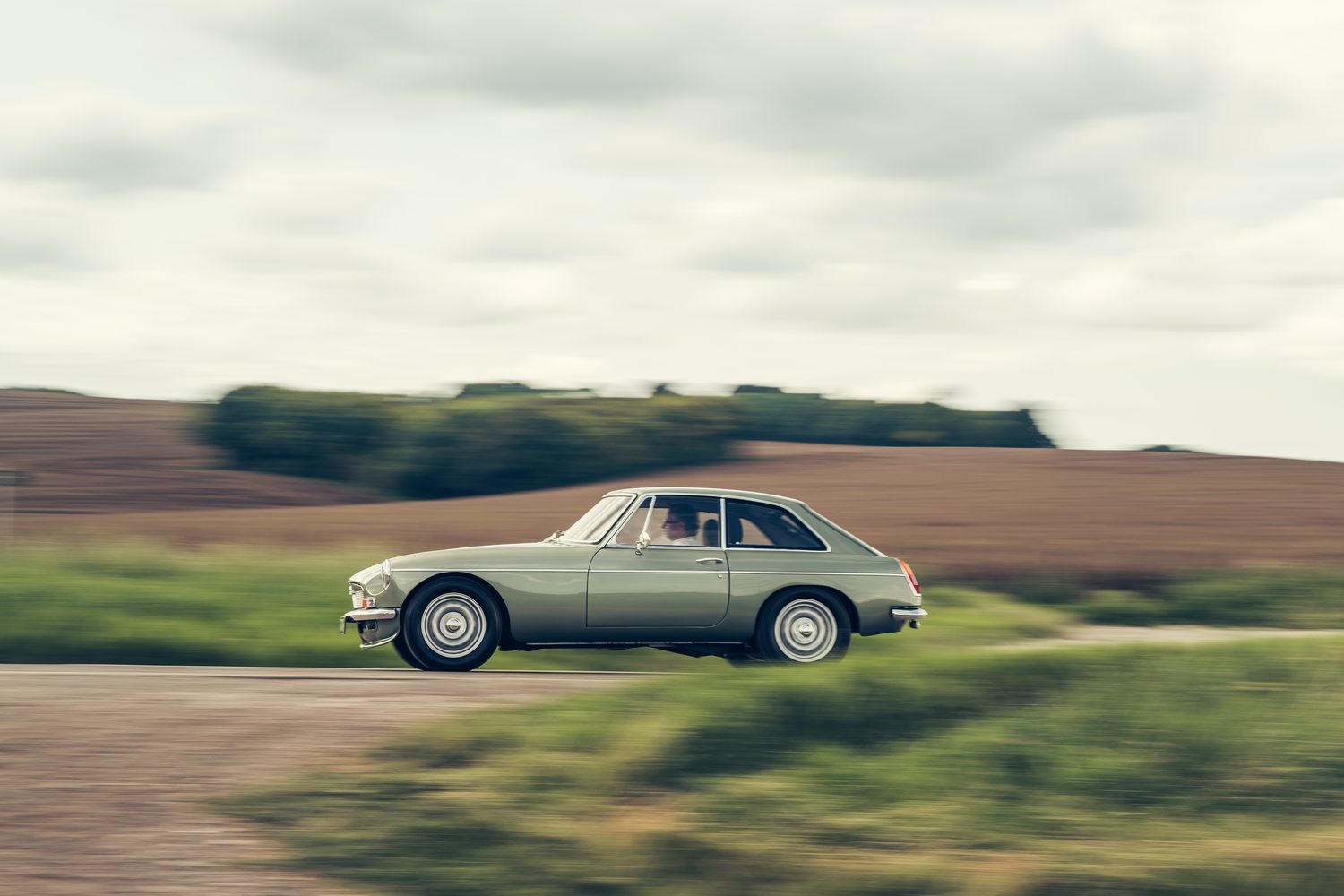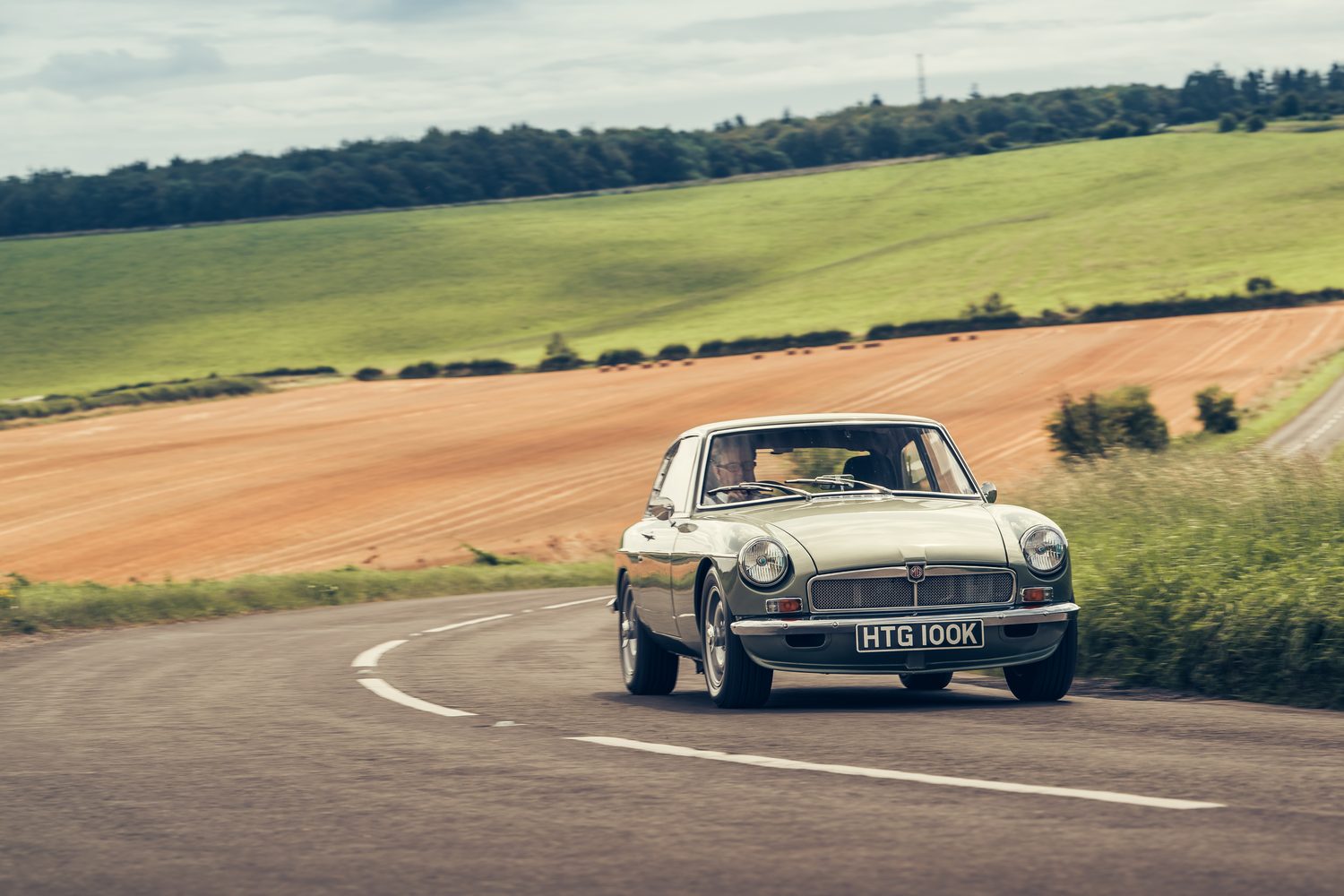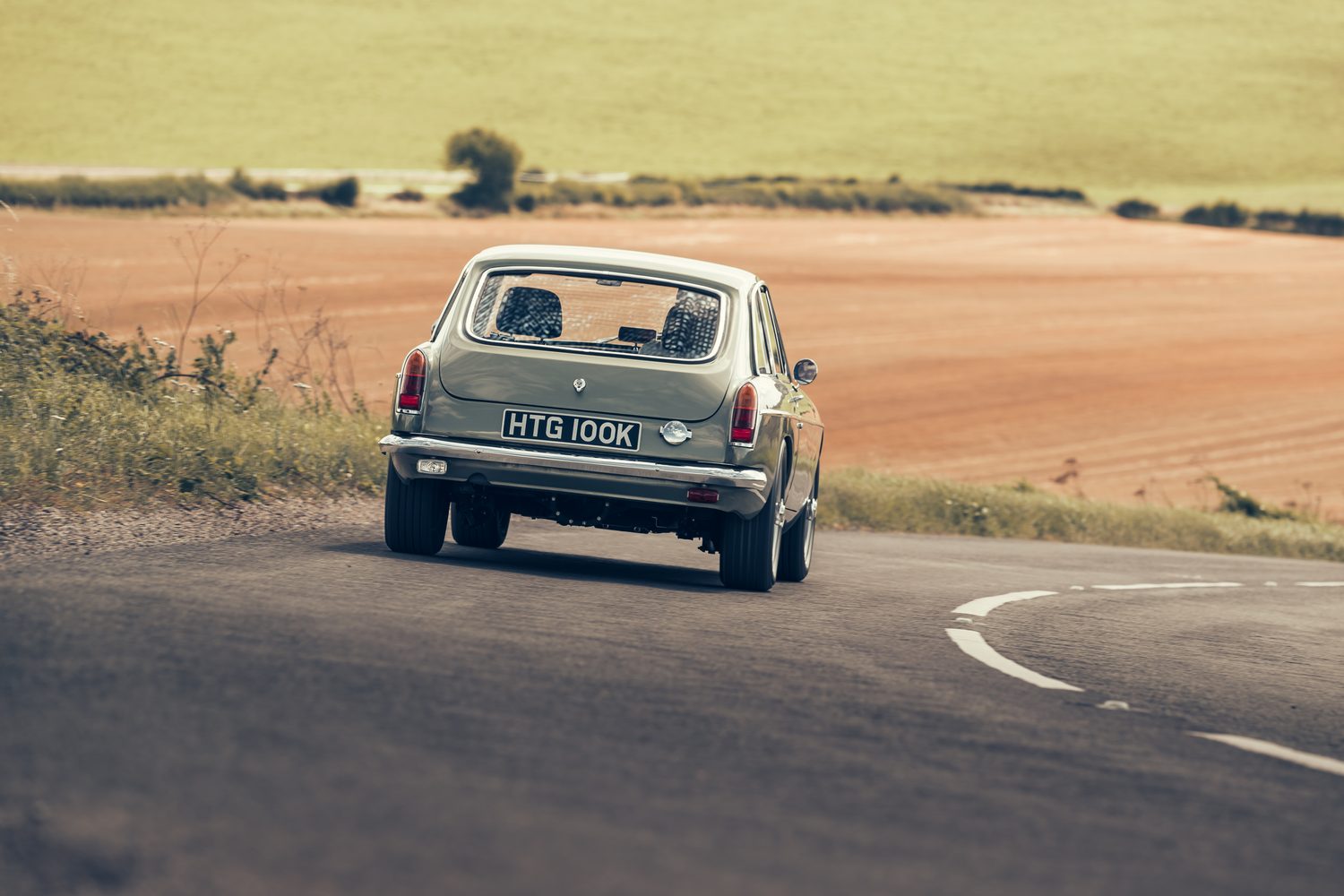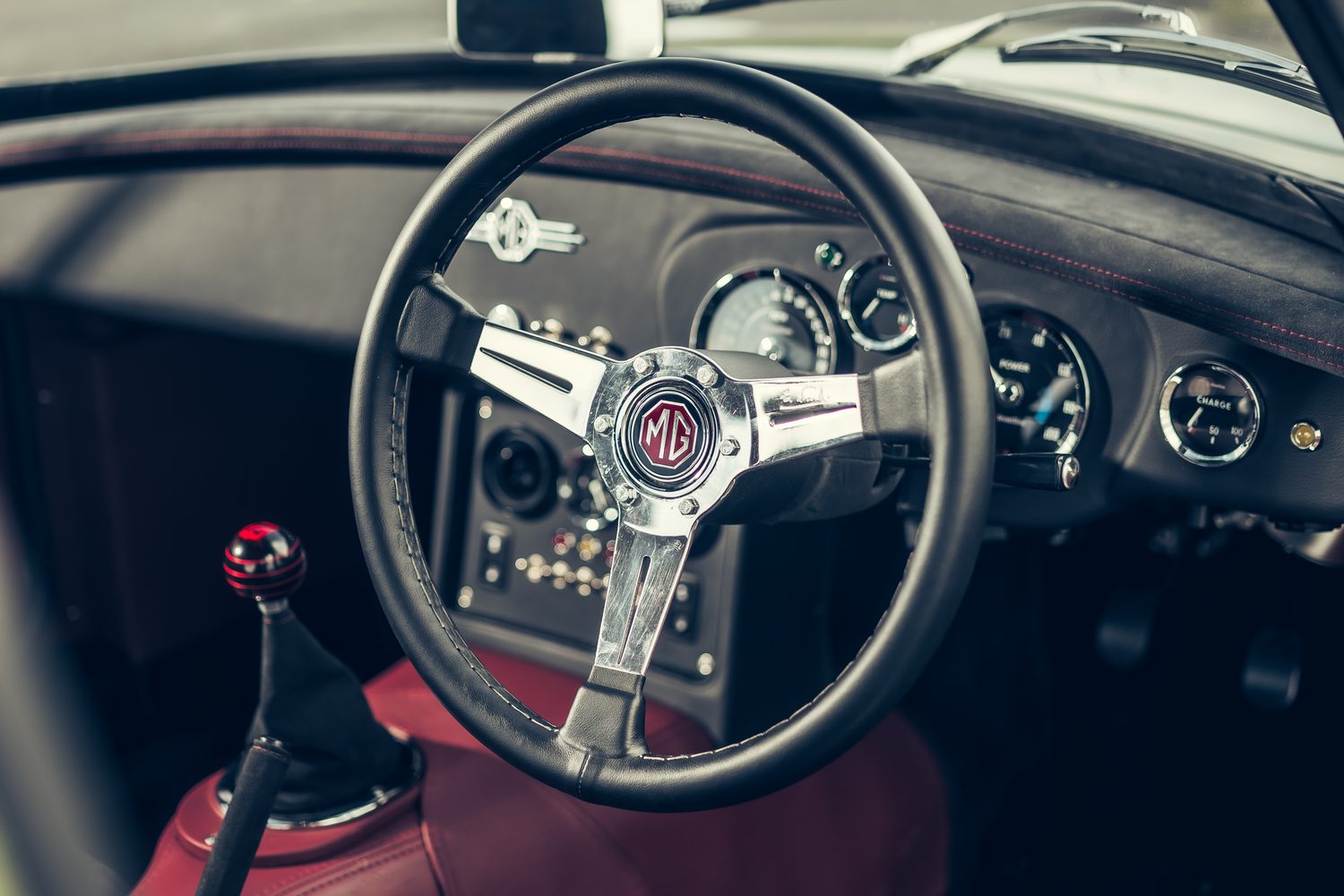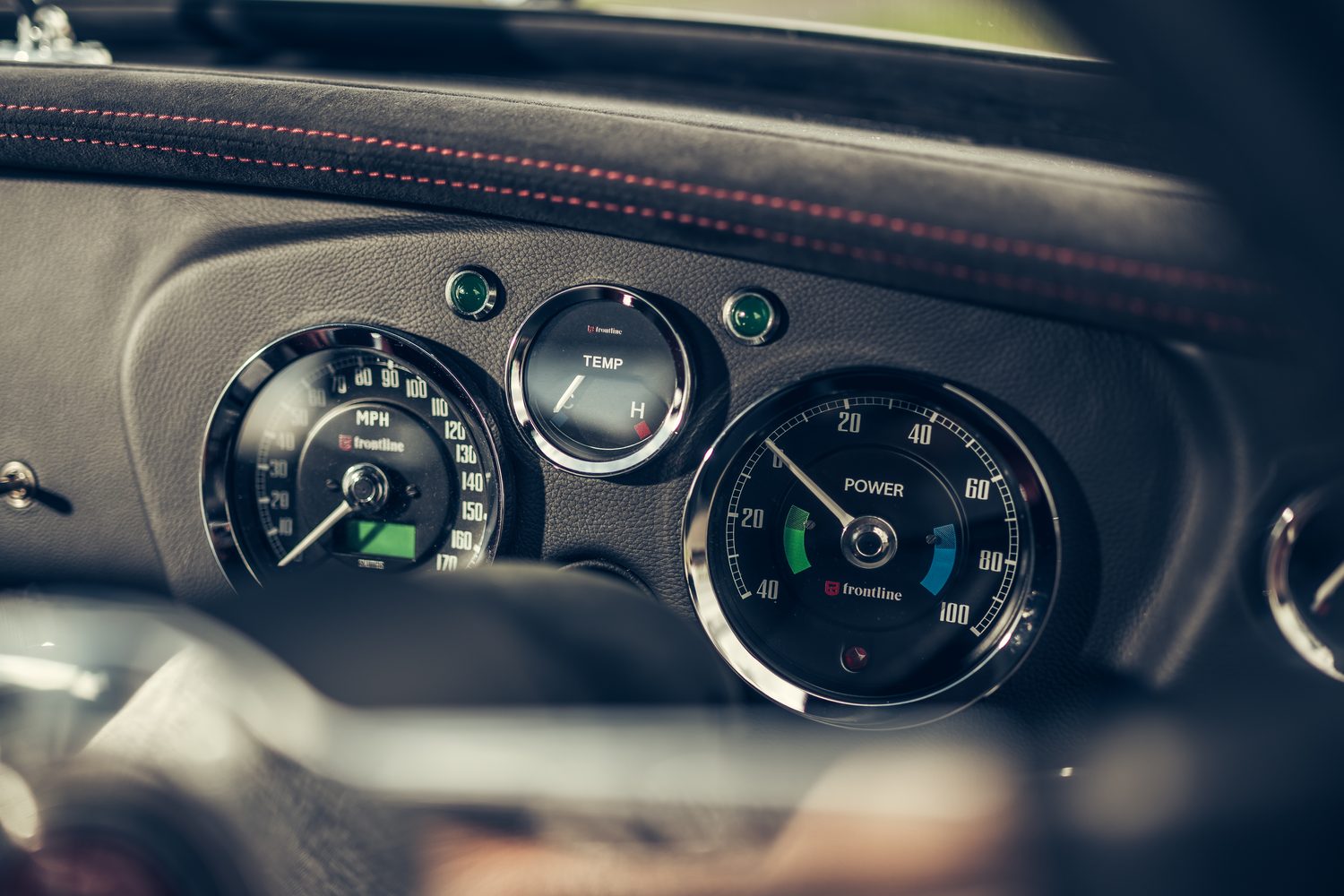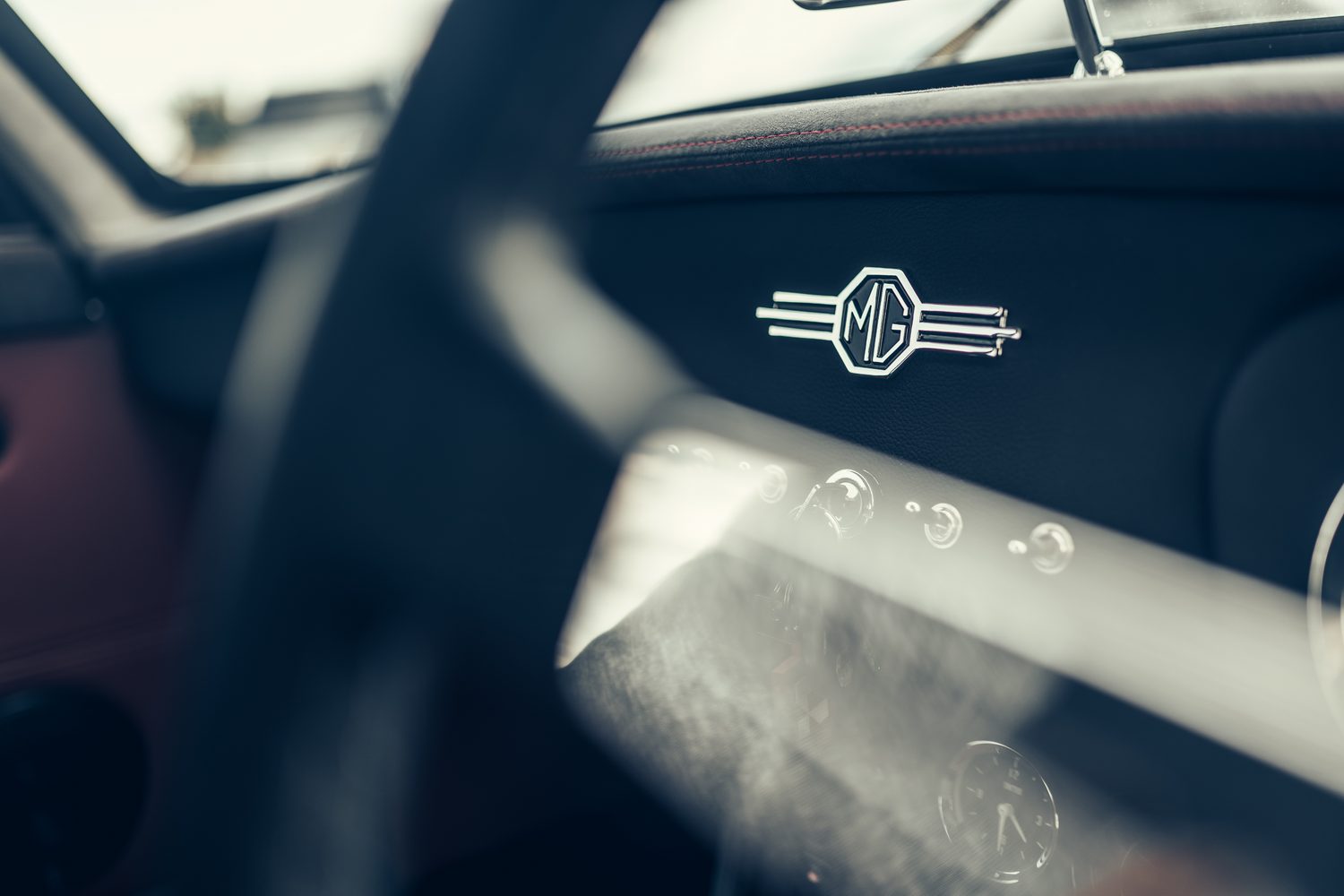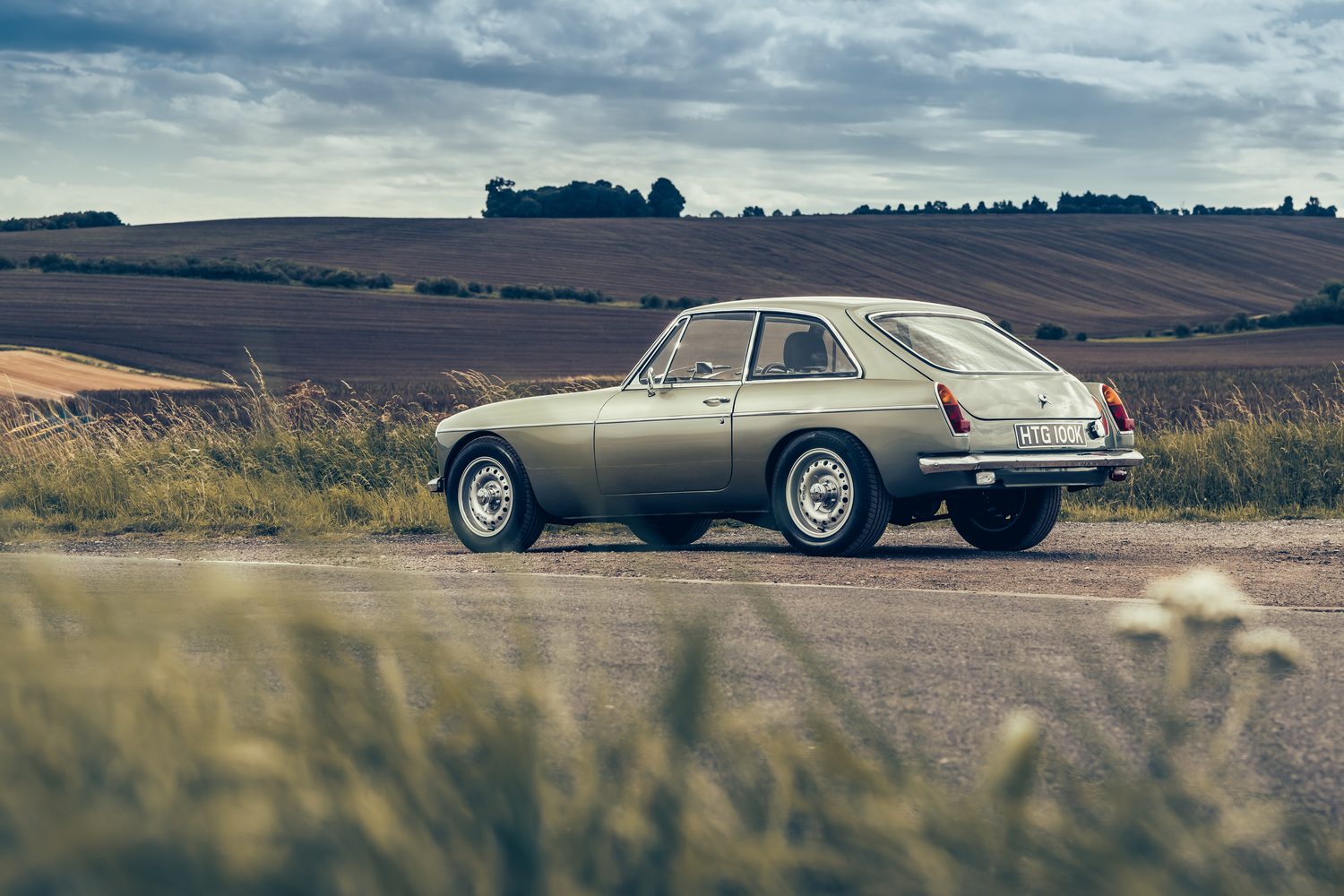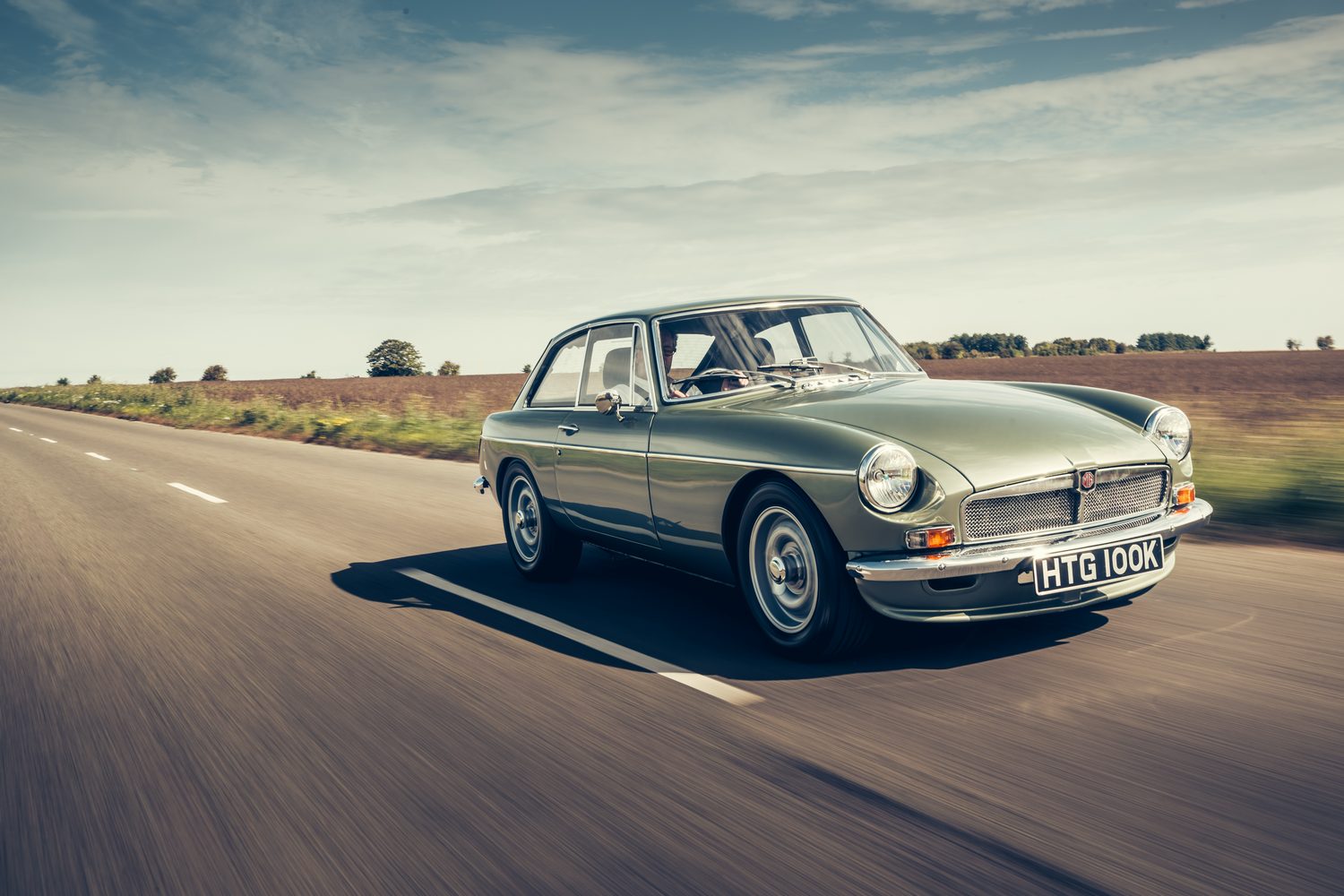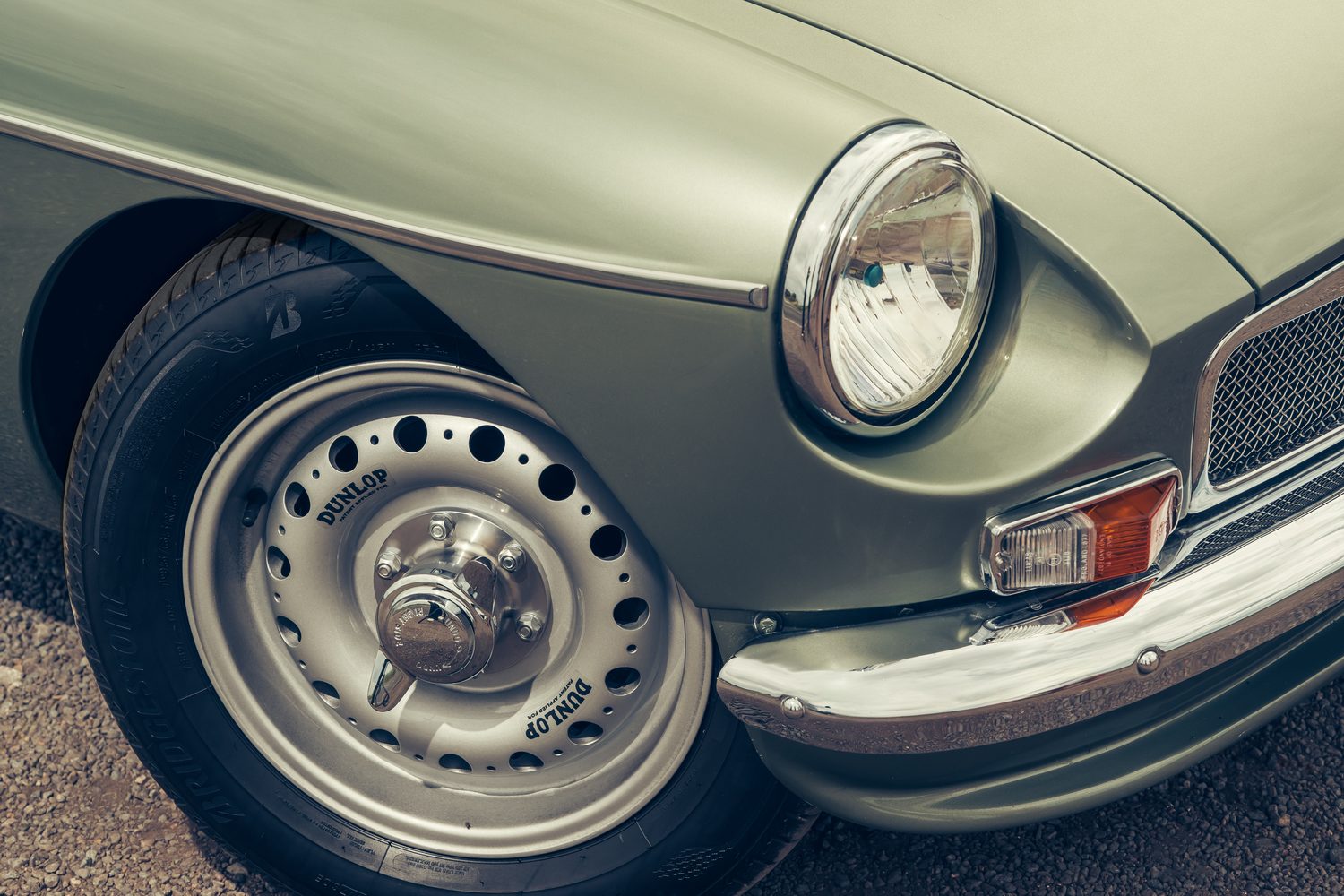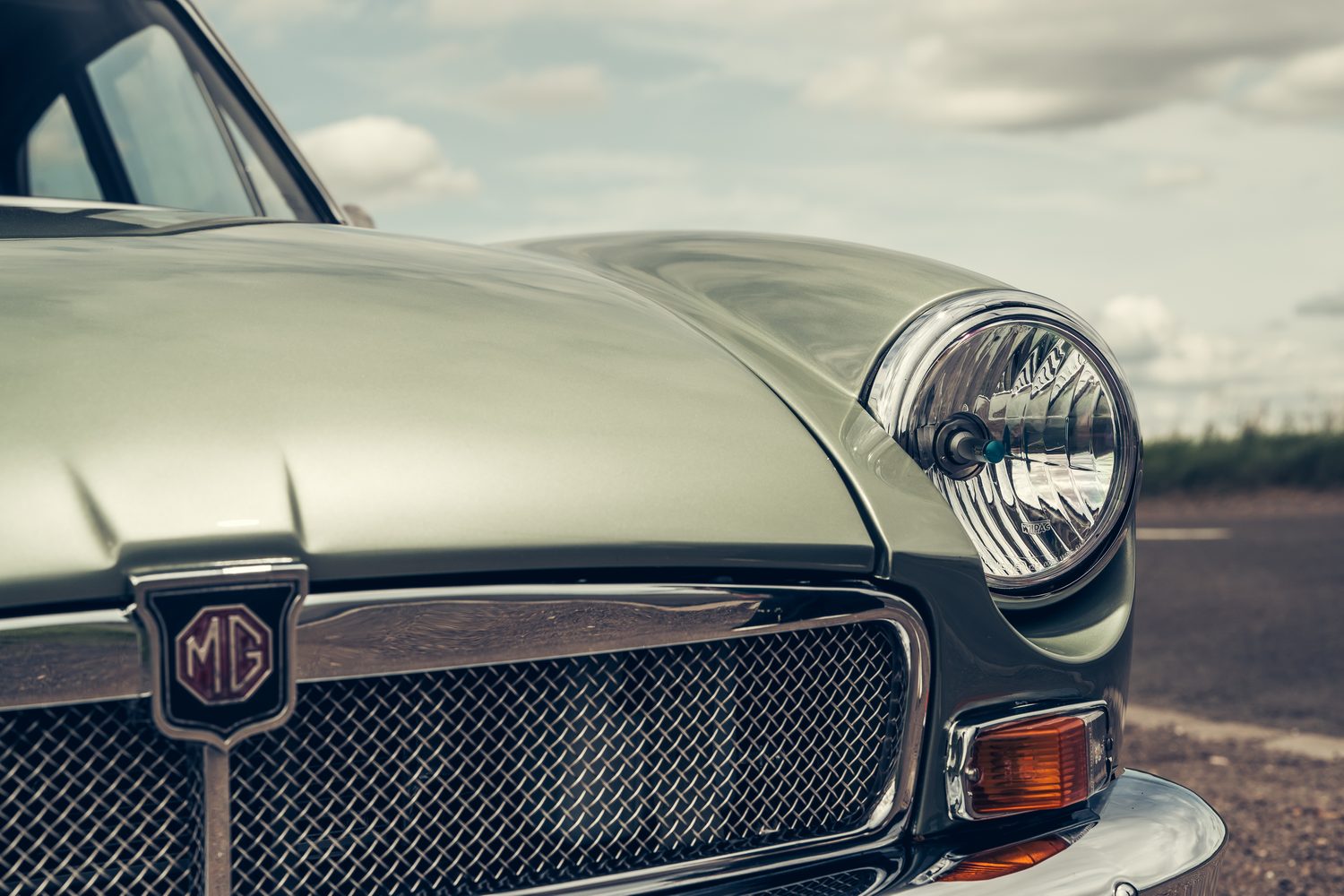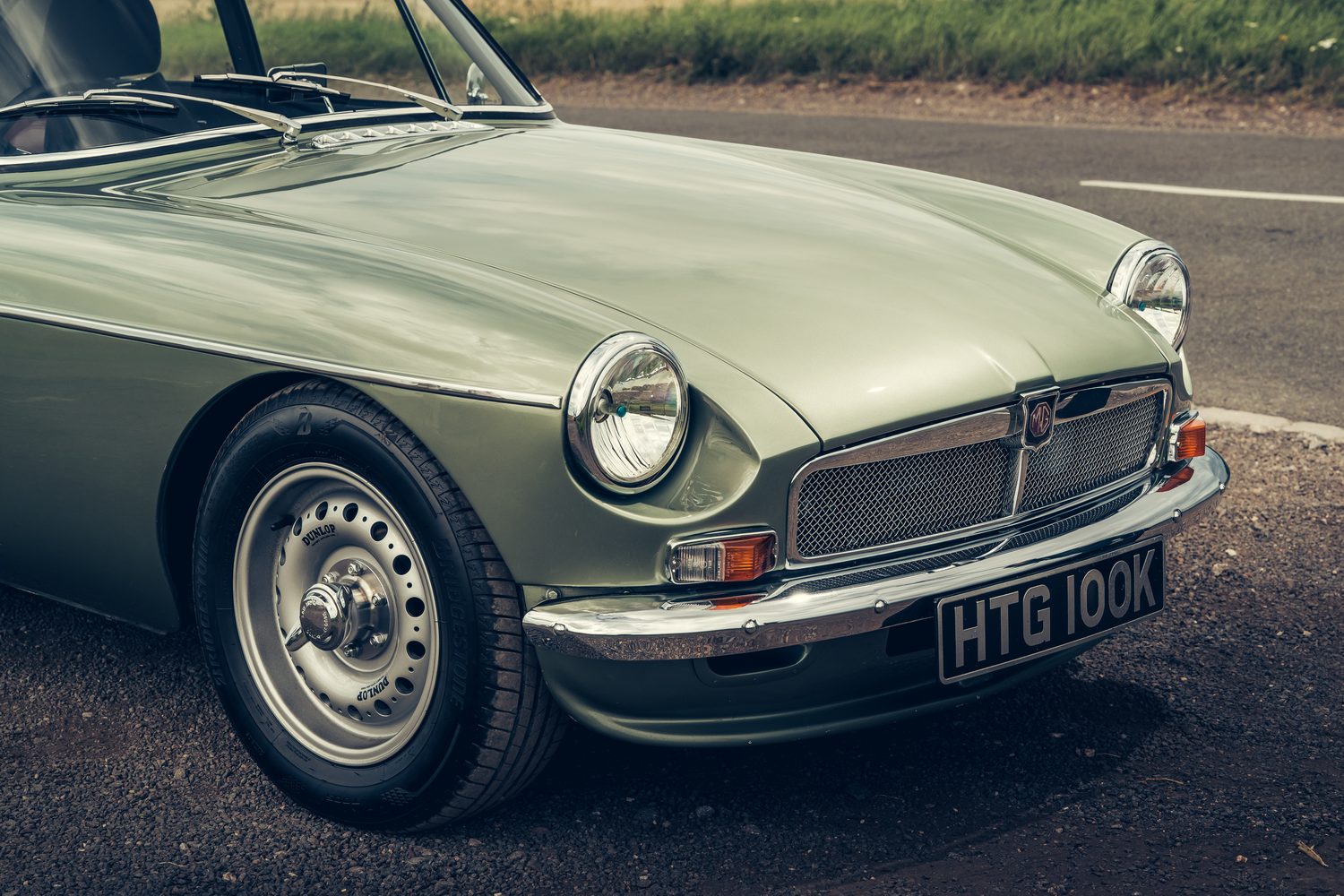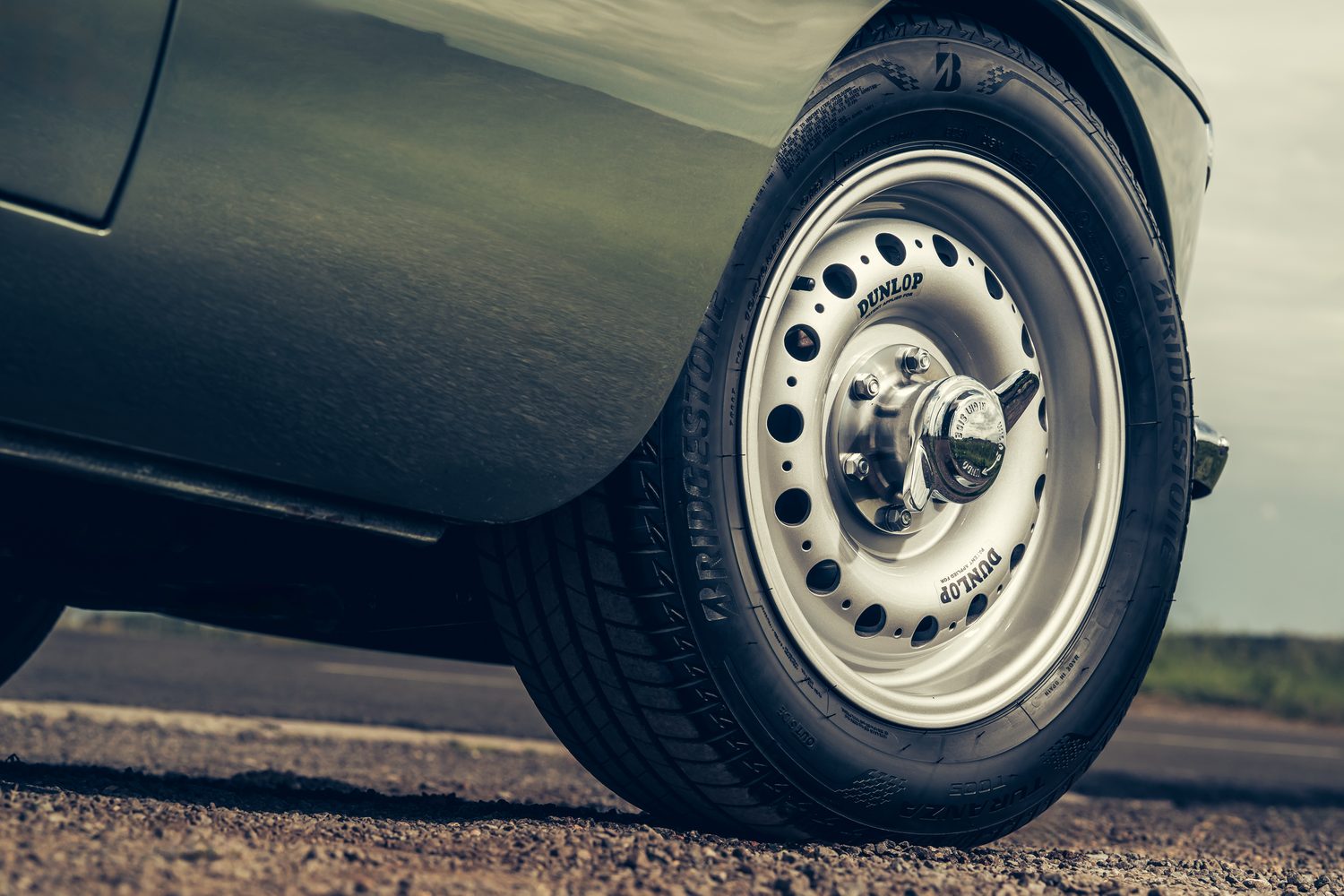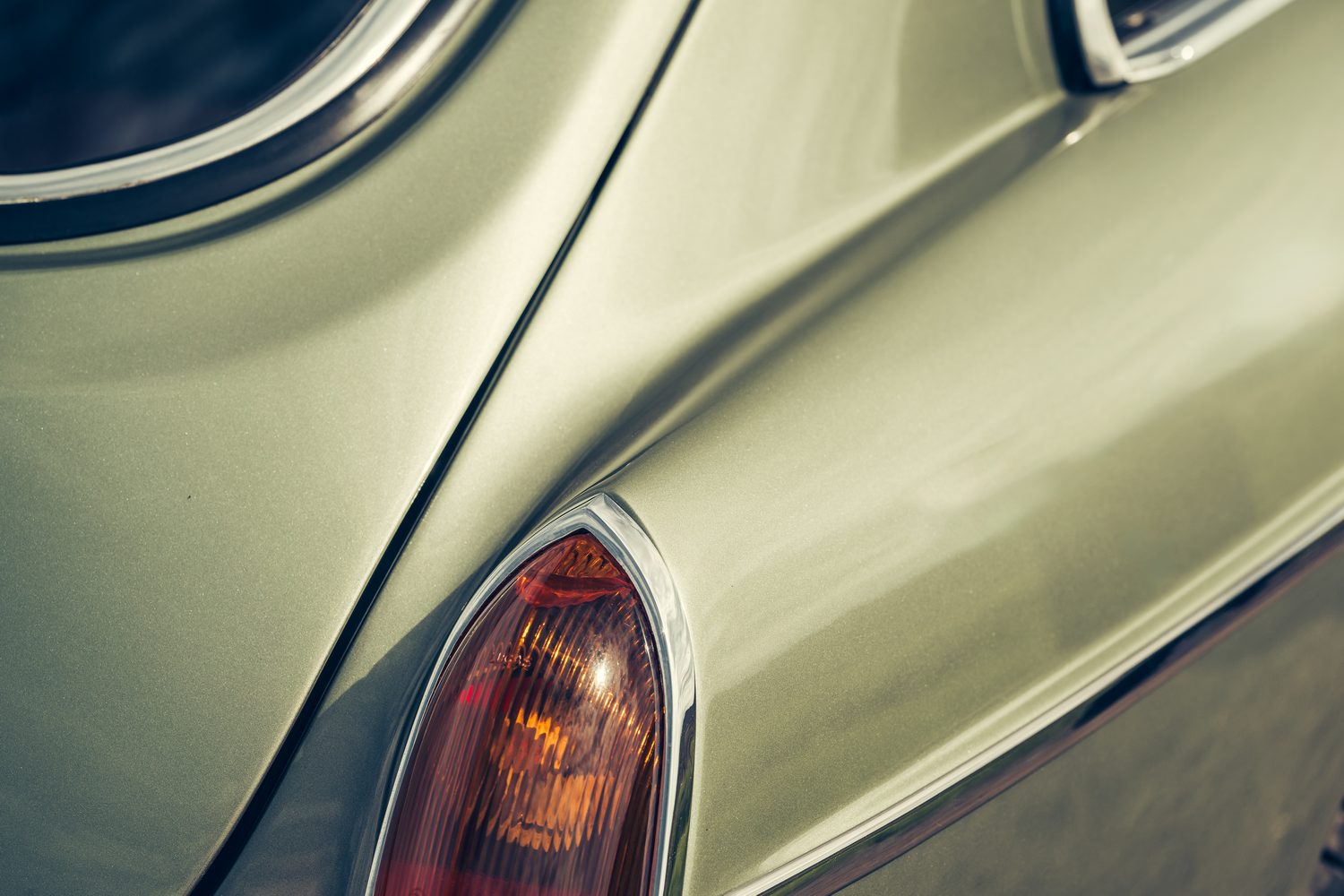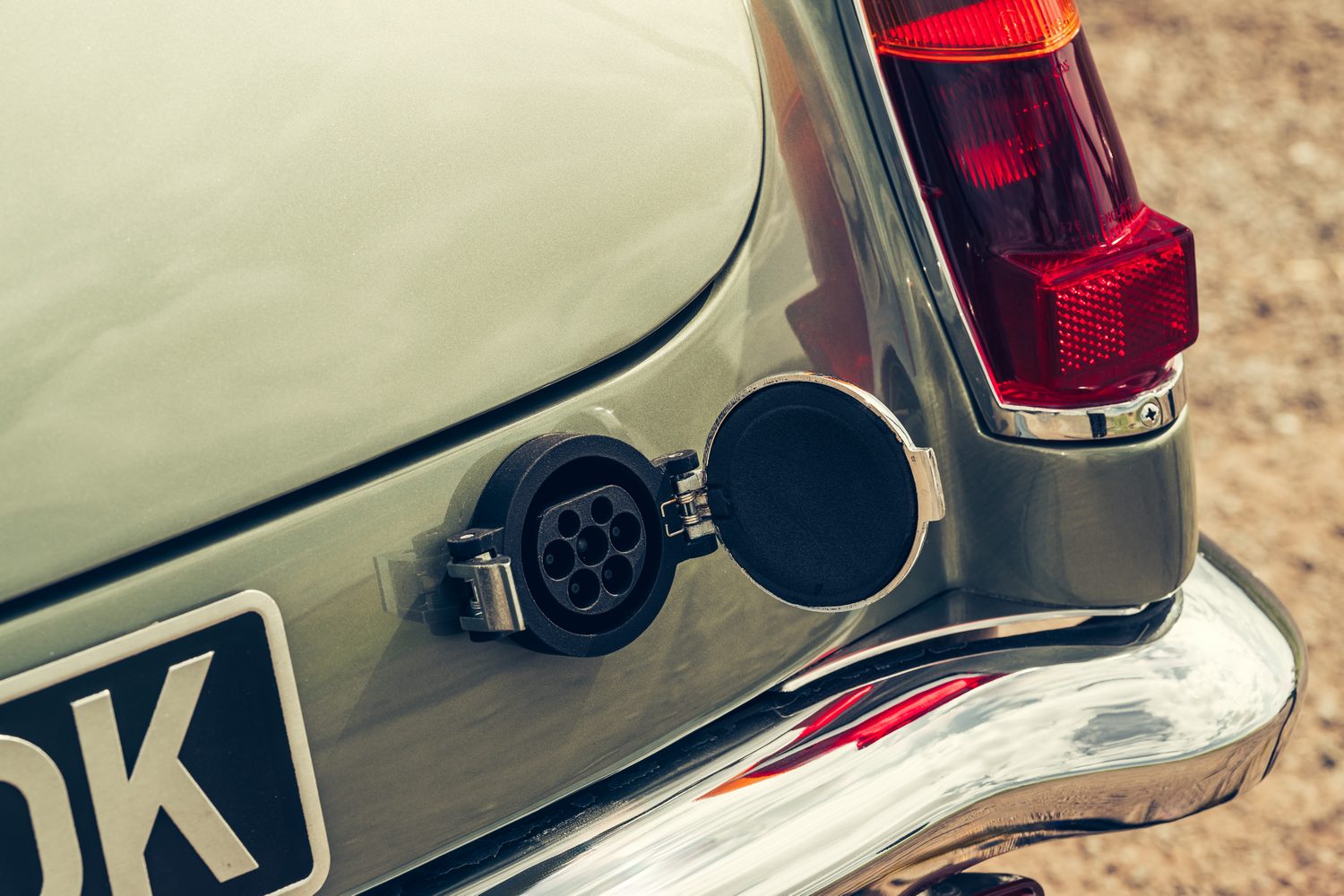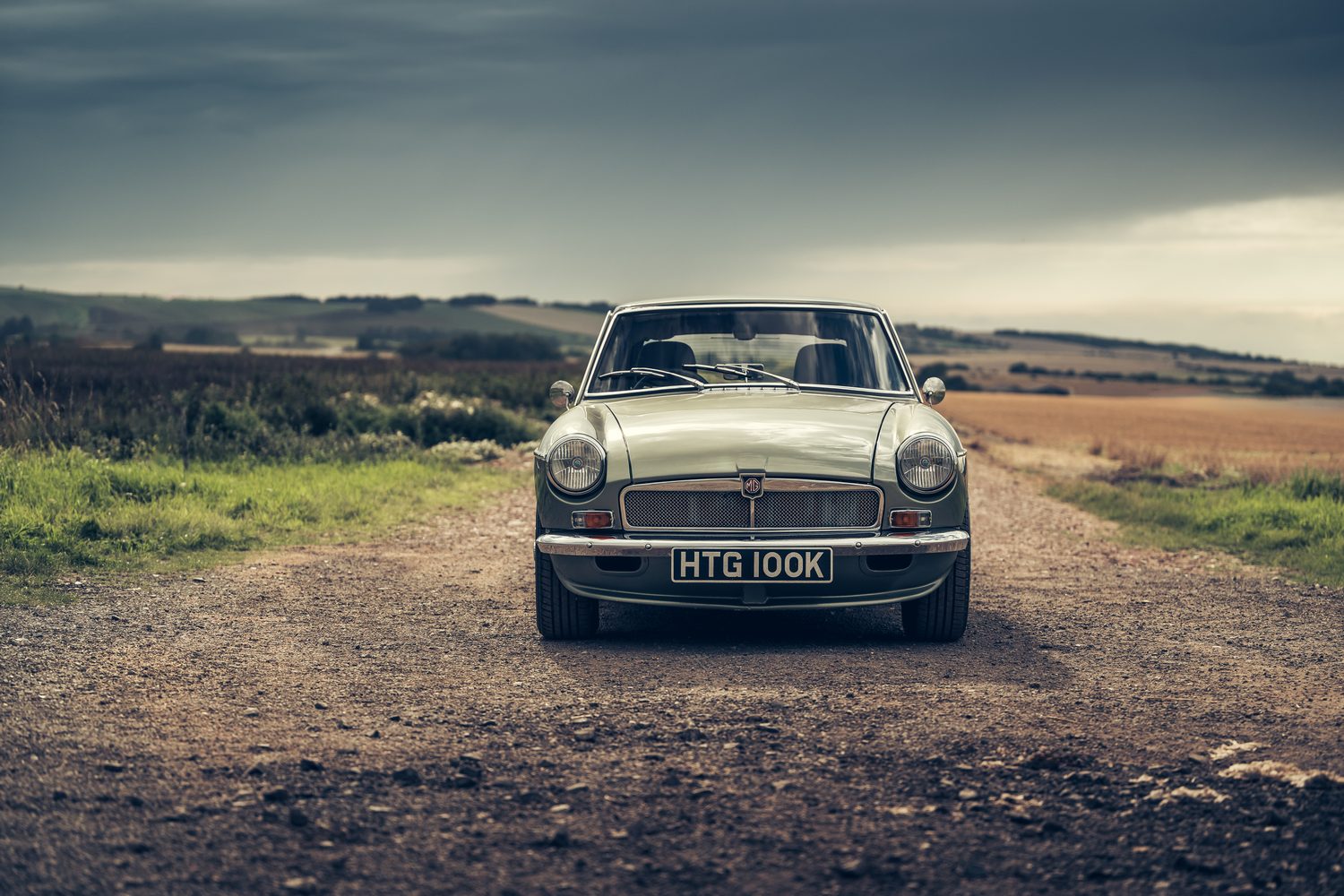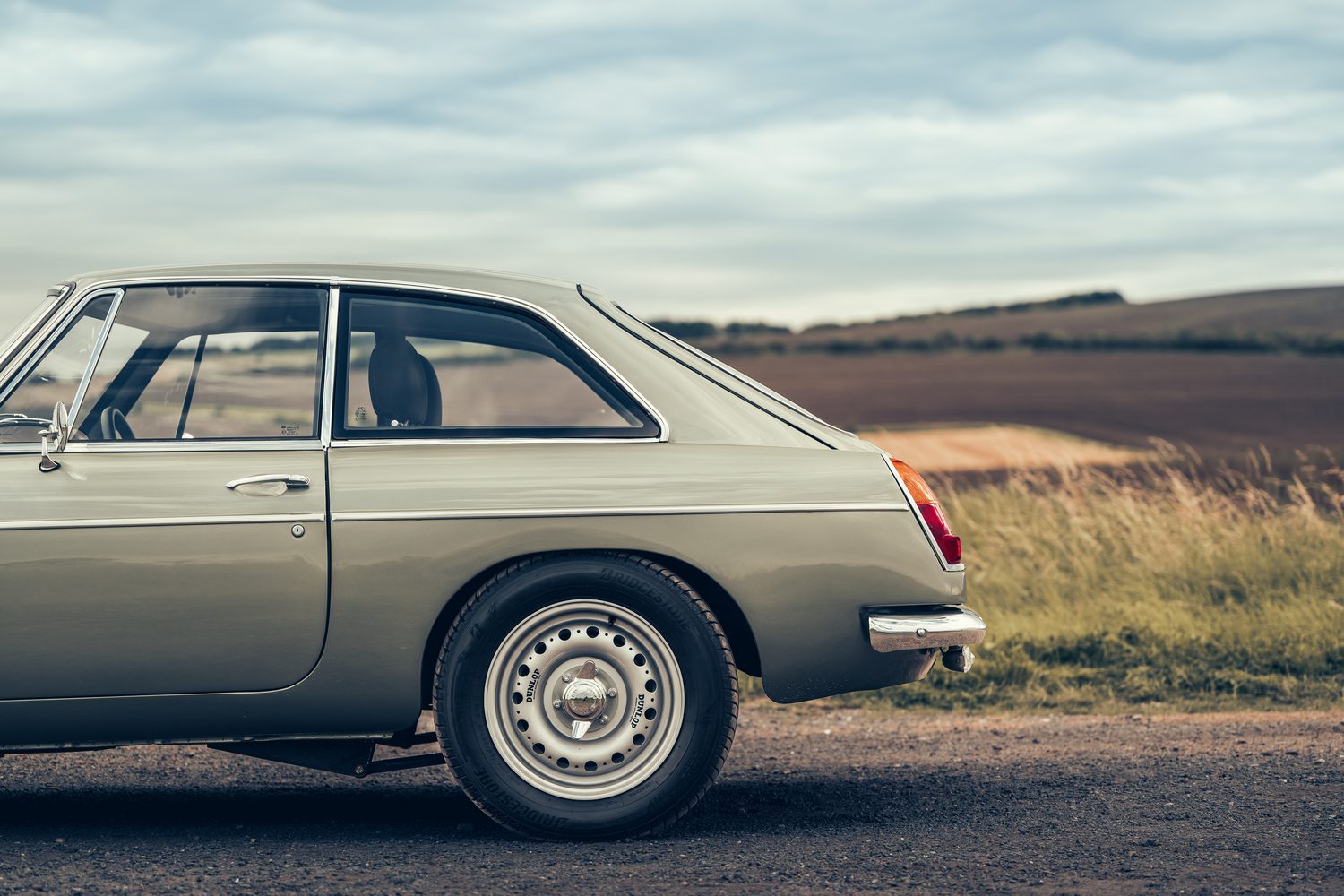Whatever you think of putting electric motors in classic cars, there's a market for it. Companies around the world are springing up to electrify historic cars. And British sports car specialist Frontline is no different. Having resisted for some time, the company that made its name building bespoke MGBs has branched out to fit an electric motor to the classic sports car. It won't be everyone's cup of tea, but will Frontline's execution of the system give the cleverly named BEE enough desirability to convince buyers it's worth its hefty price tag?
In the metal
Frontline's history in electric vehicles is, shall we say, short. For decades, now, the small British company has been fettling MGBs, and it has even created its own 'restomods' to celebrate the car's 50th anniversary and, more recently, its 60th. But while the LE50 and LE60 models use tried-and-tested internal combustion for power, the company has so far resisted calls for an electric model. Until now.
Powertrain aside, though, the BEE - a clever play on words, we think - is essentially like any other Frontline restoration. Which is to say it's unlike any other Frontline restoration. The company goes about things in its own way, and every car is basically unique. Whatever customers want, they can have, and they get to choose exactly what that might be at the company's 'clubhouse,' which is hidden away in central England.
There, the company will take customers through the process from start to finish, helping them to choose everything from big-ticket items such as the paintwork (which takes a month to apply) to smaller things such as exactly how much lumbar support the passenger would like. Obviously, the MGB shape - you can choose whether you want a roadster or a GT coupe - will stay much the same for every car, although Frontline does make its own adjustments. All the panels are lined up and rebuilt, if necessary, with some of the seams and gaps removed for better rustproofing. The application of modern paint techniques helps on this front, too, and the car's chassis is stripped down and recoated to ensure it lasts.
The MG's interior is completely stripped out, too, and it can be rebuilt in almost any way you choose. Frontline has a rig set up to ape the cabin of an MGB, and with that the company can tune the seat position and shape to the demands of the customer. And the dashboard and door cards can be custom-made, too, with an inhouse trim shop that has access to pretty much any material the buyer requires and near-infinite adjustment. For example, customers can choose whether they would like armrests in the door cards, and then they can choose what shape and size those armrests will be, and where they will sit for maximum driving comfort.
But the basic aesthetic is generally faithful to the style of the period - these cars are for enthusiasts, after all - and Frontline has created some subtle tweaks for the BEE. Chief among these are the new gauges, with a power meter replacing the tachometer and a range dial in place of the fuel gauge. Hidden behind the dashboard is also a Bluetooth-enabled sound system, while 25kg of insulation is spread throughout the cabin to try to keep the interior refined and quiet.
For customers who choose the GT hard-top model, the car has its rear seats removed to maximise boot space, creating a large luggage compartment lined with leather and aluminium anchoring points, although buyers can replace the floor with wood if they prefer. Either way, it creates ample space for luggage, allowing owners to use the car as a grand tourer, even in electric form.
As you'd expect from something so expensive, the attention to detail is incredible, and the car feels beautifully engineered. Even the sun visor brackets, once made of brittle Bakelite, are now made with aluminium for a more durable and premium finish, while all the panels fit together perfectly. It maintains the classic car feel, but the engineering is unmistakably from the 21st century.
Driving it
In place of the conventional (and, by modern standards, slightly underwhelming) petrol engines that powered the original MGB and MGB GT, the BEE has something altogether different. A Hyper9 electric motor provides propulsion, and a 40kWh battery provides that motor with its energy, but then things get decidedly old-school again.
Whereas most electric powertrains use a single-speed transmission to turn the wheels, taking advantage of the motor's wide rev range (the BEE's Hyper9 gets to 9,000rpm), the BEE uses a five-speed manual gearbox based on that used in a Mazda MX-5. You get three pedals, as you would in a petrol-powered MG, but you can choose how you use the gears.
Because the motor cannot stall, there's no need to use the clutch when pulling away. Put the car in gear, then just use the accelerator and brake as you would in an automatic. In fact, you don't ever need to change gear if you don't want to - you can just leave it in third or fourth and use it like an automatic. If you do that, though, the motor will lack the grunt to get moving quickly when you set off, so it's better to use the gears at least a bit. We found the best 'lazy' way of using the powertrain is to start in third, then change up to fourth for high-speed motoring, only switching down the gearbox when you come to a stop.
If you want to get more involved, though, you can use the gearbox as you would in a normal manual car, although slipping the clutch creates some strange noises from the driveline. The middle ground is to leave the clutch alone when setting off, but use the gears when driving, waiting until the clutch pedal is fully released before stepping on the accelerator again.
To help with all that, Frontline had tuned the electric motor to deliver power in a manner more akin to a petrol engine, with the power building as the speeds rise, but customers can choose to have the instant torque more commonly associated with electric motors if they so wish. They can have more power than our test car's 123hp, too.
Not that more power is really necessary. With a 0-100km/h time of around nine seconds, performance is roughly on a par with that of the original MGB GT, so performance won't be an issue. Plenty of modern cars are considerably slower than that, and we deem their performance adequate, so power is not a major need of such a light electric car.
Nor is range. Frontline reckons the BEE will cover around 225km on a single charge, and while that isn't brilliant by the standards of the modern MG4, it's competitive alongside urban electric cars such as the Honda e. And for those who just want to take their car for a spin on a Sunday, it should be more than enough.
And if you are one of those people who just wants an electric sports car for guilt-free fun on a sunny afternoon, there's good news. Despite the clever electric powertrain, the BEE is still about 70kg lighter than a standard MGB, and both cars - the GT and the roadster - offer similar 50/50 weight distribution to the original. Frontline has also fitted adjustable dampers, a limited-slip differential and uprated brakes, as well as modern tyres. That means the road holding is far better than that of the original, and there's more confidence in what the car can do.
In part, that's helped by the steering, which manages to feel more precise and more exacting than that of the original MGB, but still keeps some of the old-school charm. The suspension does a similar thing, providing enough body control to keep the car feeling nimble, but without eliminating lean entirely. You can still feel each corner taking more or less of the load as you drive, but the car turns in keenly and offers great balance. In fact, it's so good that you forget about the originality or the motor system and just enjoy driving it. And while it's true that the low-speed ride is a bit harsh and the steering is still a bit heavy, it's even pleasant enough in town, albeit not quite as relaxing as a modern EV.
It won't charge as quickly either, with only a Type 2 charger that allows relatively slow AC charging from a domestic wallbox charger or a less powerful public point. Again, though, given most people will only use their BEE a couple of times a week at most, that isn't a great problem.
What you get for your money
It's difficult to say exactly what the BEE costs, because it changes with every commission. If you want a clever navigation system and teak decking, you can have it, but it won't come cheap. Whatever you do - or rather, whatever you don't do - Frontline will charge you around £120,000 (roughly €140,000 at the time of writing) for a BEE, but you can take that price as high as you like with your own bespoke features.
Summary
To some, putting an electric motor in an old MG will be sacrilege of the highest order, and those people will probably be so irate at the idea that they will probably never even read this. But for those with a more open mind, the BEE is at least an intriguing proposition. That said, it feels like more of an expensive novelty than a serious proposition, and as well executed as it may be, the BEE feels a tad superfluous. If you have a decent bodyshell to donate and you like the idea of zero-emission motoring, there's obvious appeal, but Frontline has worked hard to make the electric motor feel more like a petrol engine, and that adds something for the petrolhead, too.

